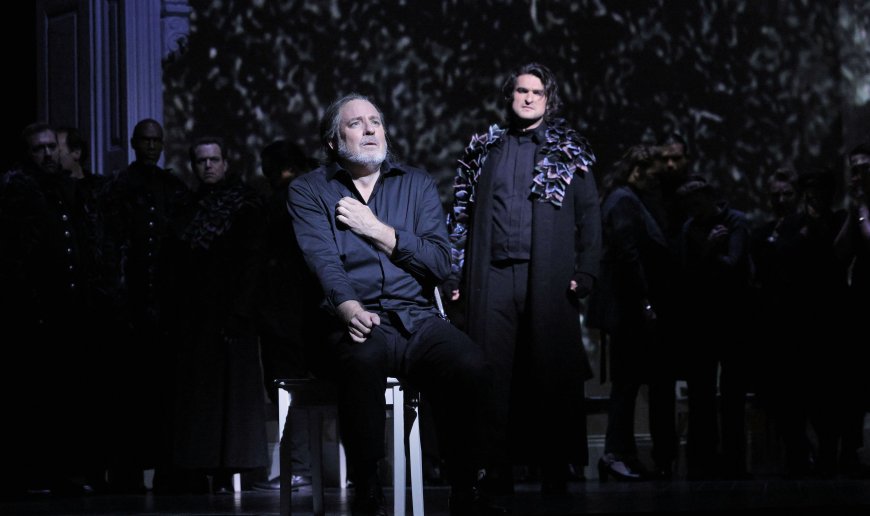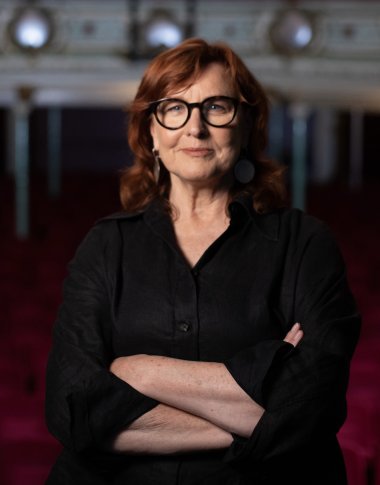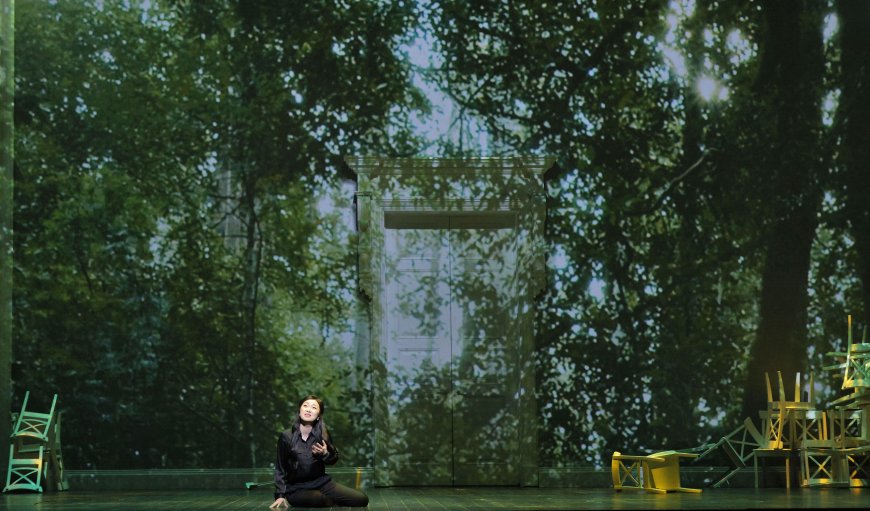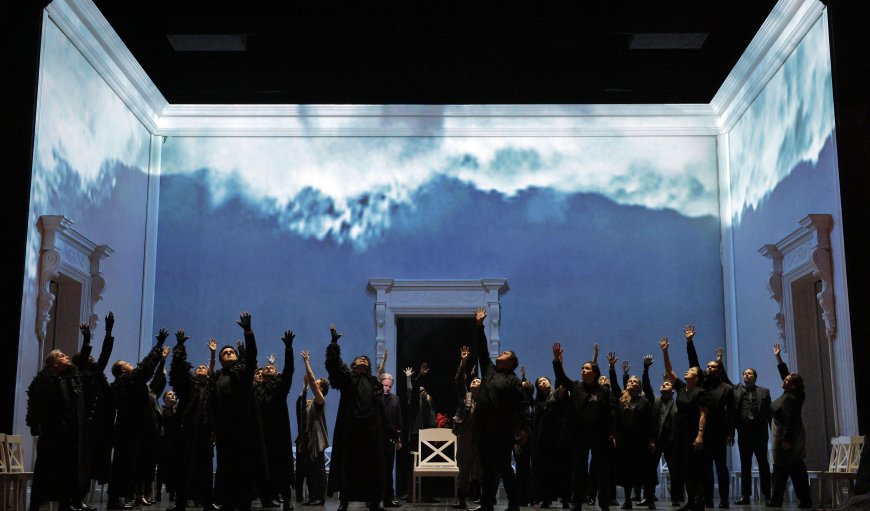
Director Lindy Hume loves all of Mozart’s operas. But Idomeneo — written when the composer was only 24 and considered his first masterpiece for the stage — is her favorite for its combination of ancient mythology, Enlightenment ideals, and Faustian bargains.
“It’s an absolutely extraordinary work. It’s hands down my favorite Mozart opera, way ahead of Don Giovanni,” Hume said. “I love Don Giovanni, and I would happily direct Don Giovanni tomorrow, but I would forgo any of it to direct Idomeneo as much as possible.”
Just one thing might keep her from being involved with Idomeneo again after the production she’s directing for San Francisco Opera’s summer season wraps up. Five performances are scheduled at the War Memorial Opera House, June 14–25.
“Maybe this will be my last one because it is pretty much the best cast in the world,” Hume said. “That’s kind of a nice way to go out and drop the mic.”
It certainly doesn’t hurt that Matthew Polenzani, who’s set to sing the title role, is considered one of the great Mozart tenors of our time.

In a 2017 review of his performance as Idomeneo at the Metropolitan Opera, The New York Times remarked that certain tenors “emphasize the heroic cast of the music. But the role also demands classic Mozartean refinement. Mr. Polenzani combines both qualities in his poignant, gripping performance, singing with melting warmth one moment, virile heft the next.”
Like Hume, Polenzani told SF Classical Voice that he loves every Mozart opera — but none as much as this one. Set in the aftermath of the Trojan War, Idomeneo tells the story of the shipwrecked king of Crete, who, after he safely reaches land, remembers a promise he made to the god Neptune to sacrifice the first living being he meets. And who should greet him on shore but his son Idamante?
“I love the drama that Idomeneo faces and the anguish, and I relate very deeply to his fatherhood and his need to keep his son alive,” Polenzani said. “A lot of that drama hits me.”
The tenor made it clear that it’s not just his character who has great material. “Ilia’s music is spectacularly beautiful,” he said, citing the role of the captured Trojan princess who loves Idamante. “All three arias she has are just tour-de-force arias. And oh my gosh, the chorus music is some of the best operatic chorus music ever written. Mozart reached a height here I don’t think he [ever reached again] except maybe in the Requiem.”
Mozart’s score might be better known at SF Opera than elsewhere, considering that the company’s first permanent music director, John Pritchard, appointed in 1985, was a big supporter of Idomeneo. It was the last opera he conducted here before his death in 1989 and was subsequently performed at the War Memorial in 1999 and 2008.
Both Hume and Polenzani would love to see Idomeneo become a more regular part of the repertoire. “It straddles this world of the Baroque and the Classical period,” Hume said. “It’s not as boldly drawn as Don Giovanni or The Magic Flute, but it is a very special work.”

SF Opera’s new staging of Idomeneo is a co-production by Melbourne’s Victorian Opera and Sydney’s Opera Australia, where Hume directed the work in 2023 and 2024, respectively. The production uses projections of Tasmania’s dramatic coastline and sea to stand in for Crete.
The Australian-born Hume has lived in Tasmania, and she thought this would be a good way to show the epic scope of the natural world in Idomeneo.
“I was very aware of the extraordinary wilderness and ancientness of Tasmania and its First Nations mythology, and I was really interested in that,” she explained. “When Idomeneo came up, it was like, well, the sea is everywhere. I know that feeling — island-ness is a very particular thing. The consciousness of a community on an island is kind of hermetically sealed.”
Polenzani said that he thinks the projections give audiences a deeper understanding of the piece. “I love the video elements,” he said. “What Lindy has done is create visual cues to extend and enhance the emotion of a scene. It can all be dialed in to whatever the actor is doing.”
For Hume, Idomeneo has the epic tragedy of King Lear, flawed characters and all. But there’s also a radical optimism to the opera, she said.

The title character “goes from such a dark place to such a place of acceptance,” she explained. “The last few pages are just profoundly moving. The other thing that I think is absolutely astonishing about Idomeneo is the chorus, [which] is, by a very long shot, the biggest character in the opera and my favorite.
“Our community onstage leaves the audience with such a beautiful message of regeneration and hope and optimism that it feels to me that it is a truly happy ending. And you don’t get those often in opera without a kind of slightly saccharine quality,” she said. “This one feels so hard won and so full of insight.”
Staging Idomeneo at the War Memorial adds an extra layer of significance, Hume noted.
“In San Francisco, that last act and the statement of Idomeneo’s acceptance and welcoming of peace, and passing on to the next generation, will happen [just next door to] where the U.N. treaty [the United Nations Charter] was signed,” she said, referring to the 1945 ceremony where U.S. President Harry S. Truman joined other world leaders on the stage of Herbst Theatre. “That is so powerful and so beautiful. It’s profound.”




